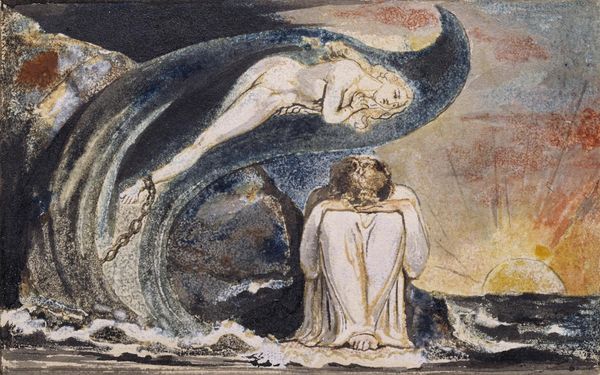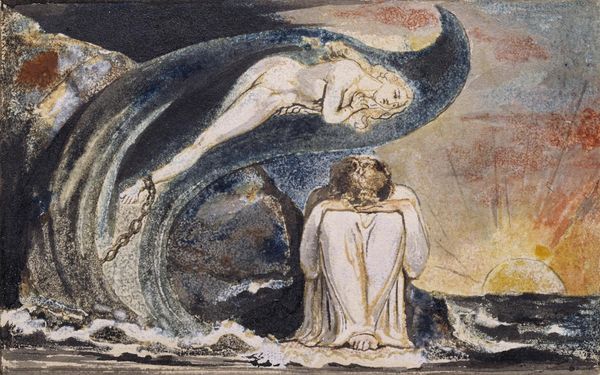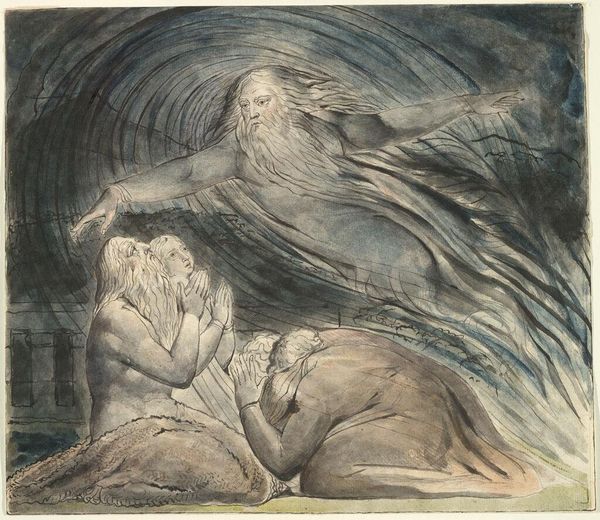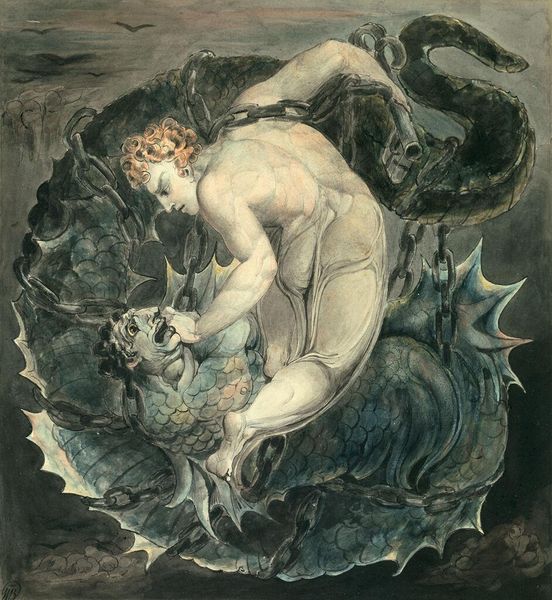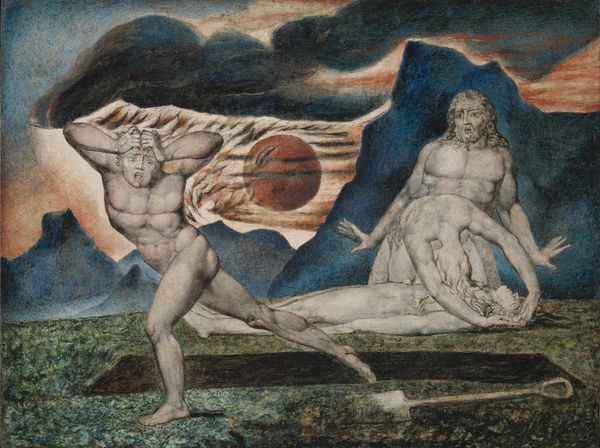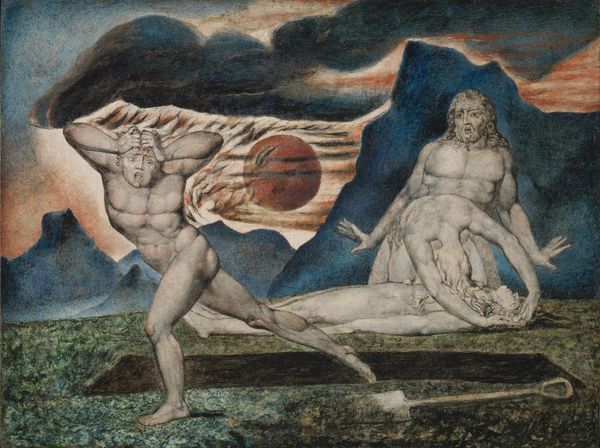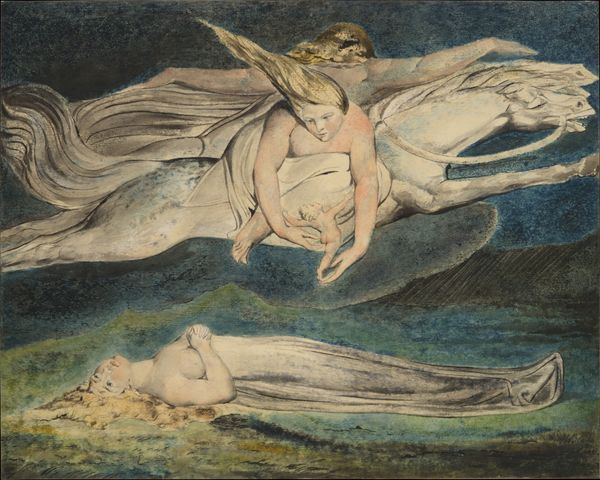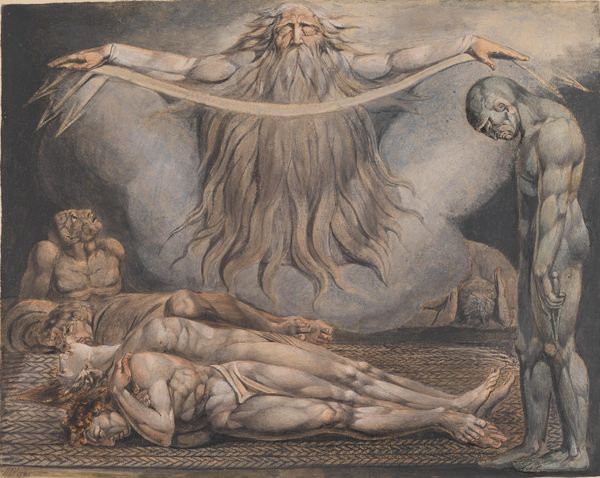
Dimensions: support: 75 x 115 mm
Copyright: NaN
Curator: This is Plate 4 from William Blake's 'Visions of the Daughters of Albion', currently residing in the Tate Collections. Blake, born in 1757, was quite the visionary. Editor: It immediately strikes me as a scene of both oppression and transcendence. The muted colors, the chains... it feels heavy. Curator: Blake often explored themes of societal constraint. The chained figure, perhaps representing a daughter of Albion, is juxtaposed with the reclining figure above, free of earthly bonds. Editor: And isn't it interesting how the chained figure is earthbound, facing away from the rising sun, while the liberated form floats ethereally? It suggests a tension between earthly suffering and spiritual escape. What do you think about Blake's politics of imagery at play in this particular work? Curator: Precisely. Blake used these images to critique the social and political structures of his time, championing individual liberty against institutional oppression. Editor: It's a powerful reminder of the ongoing struggle for liberation, both personal and collective. Curator: Indeed, a pertinent message to consider.
Comments
tate 8 months ago
⋮
http://www.tate.org.uk/art/artworks/blake-plate-4-of-visions-of-the-daughters-of-albion-n03374
Join the conversation
Join millions of artists and users on Artera today and experience the ultimate creative platform.
tate 8 months ago
⋮
The design shown here occupies the top part of a page in Visions of the Daughters of Albion. It illustrates lines from an earlier page: 'Why does my Theotormon sit weeping upon the threshhold: / And Oothoon hovers by his side, perswading him in vain:'. In the frontispiece, shown above, the female Oothoon can also be seen, with her lover Theotormon crouched in despair. In the book the daughters of Albion - the women of England - are described as 'enslav'd' and weeping. This sentiment can be associated with Mary Wollstonecraft's book A Vindication of the Rights of Women, 1792. Gallery label, October 2001
